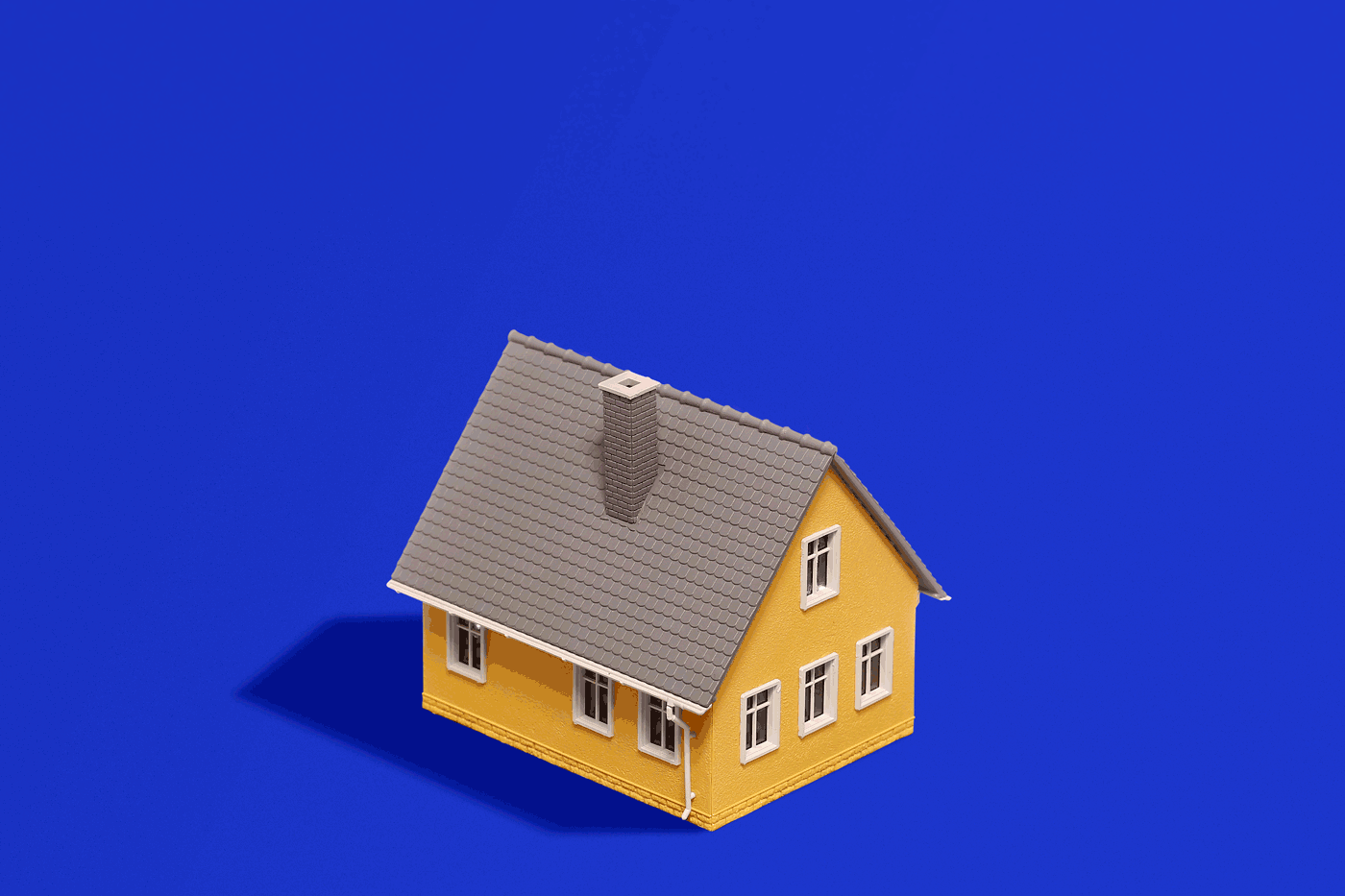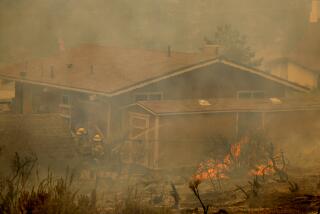Editorial: California will never control raging wildfires if it doesnât stop building in high-risk areas

After three years of devastating and deadly wildfires, perhaps we should no longer be surprised by them.
It was shocking in 2017 when the Tubbs fire jumped the 101 Freeway and charred a suburban subdivision in Santa Rosa. It was unthinkable last year when Paradise residents had to run for their lives as the city was almost entirely destroyed by the Camp fire. And still people were caught off guard last month when the Saddleridge fire forced hundreds of residents in Sylmar and Porter Ranch to flee their homes in the middle of the night.
Read the full series
A terrifying pattern has been revealed. Californiaâs wildfires are now regularly destroying subdivisions and established neighborhoods that once seemed at low risk from wildfires. Thereâs ample scientific data and research to explain why: Climate change amplifies natural variations in the weather, leading to more frequent and more destructive wildfires. Poorly maintained utility lines are setting blazes.
Despite that, weâre still building homes â more and more of them â in fire-prone areas. State and local leaders have been slow to adopt the housing, land-use and development reforms that would make California communities much safer in the coming years. Here are a few suggestions culled from experts that, if enacted soon, could deliver lasting security.
Harden homes
The devastation in Paradise, Santa Rosa, Ventura County and Malibu demonstrated that homes are not only casualties in the fires, but also the fuel that feeds and exacerbates the blazes. Wind-driven fires can blow embers over great distances. The embers lodge under eaves, get sucked into vents or broken windows and can ignite a house from the inside out, which creates more embers and more heat. The fire then spreads from house to house, sometimes leaving surrounding trees largely untouched.
The first and most obvious step is to retrofit homes in high-risk areas to make them more resistant to fire. Researchers analyzed some 40,000 buildings exposed to wildfires between 2013 and 2018. They found that homes built to keep out embers and withstand extreme heat were much more likely to survive. Yet so far, the state has done little to require home hardening or to fund it.
The needed retrofits arenât very expensive. Homeowners should cover their vents with fine wire mesh and enclose their eaves to prevent embers from getting inside the structure. Double-paned windows are less likely to shatter in high heat, and steel shutters can help too.
Properties also need regular inspections to make sure they are prepared for fire season. Are there gaps in roof tiles that might allow embers into the attic? Are the gutters full of dry leaves and twigs? Do the residents know to shut the doggie door when they evacuate?
Earlier this year, Assemblyman Jim Wood (D-Healdsburg) proposed creating a billion-dollar revolving loan fund to help homeowners pay for retrofits and to remove flammable vegetation near their homes. The funding was cut from the bill.
Next year, Gov. Gavin Newsom and state lawmakers should invest that $1 billion â or more â to help people in high-risk areas make their homes more fire resistant. But itâs not enough to have individual homeowners voluntarily harden their houses if neighboring properties are tinder boxes. Fire is contagious. The greatest protection comes when entire neighborhoods are hardened together and maintained together. Whatever legislation is passed should reflect that.
Buy out burned properties
Still, all the fire-resistant materials and hardening in the world canât guarantee safety. During the 2017 Thomas fire in Ventura County, new houses built to the strictest fire codes still burned down. The houses were in a state-designated âvery high fire hazard severity zone,â which means the area has the greatest probability of burning based on vegetation, topography and fire history. And when 80-mile-per-hour winds blow embers across a landscape that is already prone to burn, the fire can quickly overwhelm hardened homes.
State officials have to recognize that there are some homes and neighborhoods that shouldnât be rebuilt. Or rebuilt again, since some communities have burned more than once. For decades, the Federal Emergency Management Agency has helped buy out properties destroyed by flood waters, in a bid to stop the expensive and sometimes deadly cycle of flood-rescue-and-rebuild in high-risk areas. In Texas, communities have used a combination of local bonds, drainage fees and federal dollars to buy out flood-prone houses.
Buyouts are considered one of the most cost-effective ways to prevent flood destruction. These are voluntary sales and the government pays fair market value. The homes are demolished and the property becomes open space. Itâs pricey to buy up dozens of properties at a time, but it can be cheaper and more effective than developing new flood control infrastructure.
Yet thereâs been little discussion in California of trying to use FEMA grants or other funds to make similar buyout offers in high fire-risk areas. It wouldnât be possible to buy out every property owner in the very high fire hazard severity zones â there are an estimated 2.7 million Californians living there. Rather, a buyout program could target the areas at the very greatest risk, perhaps because the community was built without adequate evacuation routes, or because the neighborhood has been burned two or more times before.
Donât build in high fire-risk areas. But if development must be approved, build exceptionally safe communities
The best way to prevent wildfire destruction and death is to stop building houses in the path of fire. Half of all buildings destroyed by wildfire in California over the last 30 years have been in developed areas next to wildlands.
So far, though, gentle suggestions that local governments should consider wildfire risk when approving development arenât working, and neither is Newsomâs call to âdeprioritizeâ development in high fire-risk areas. Land-use decisions are made by local elected officials and theyâve proven themselves unwilling to say no to dangerous sprawl development and equally unwilling to say yes to denser, urban infill housing construction that would be more sustainable. Just look at Los Angeles County, where the Board of Supervisors approved construction of a 19,000-home mini-city to be built at Tejon Ranch in a remote valley that has been deemed a high risk for wildfires.
California lawmakers need to push â even force â local elected officials to make more responsible development decisions.
Earlier this year, Sen. Hannah-Beth Jackson (D-Santa Barbara) introduced Senate Bill 182, which would prohibit cities and counties from approving new housing developments in high fire-risk areas unless the projects meet new âwildfire risk reduction standards.â Those would include siting the homes so they have natural fire breaks and are easier for firefighters to defend, building evacuation routes, and having an ongoing, funded program to inspect and maintain defensible space around homes.
The bill was held up amid concerns that it could allow anti-growth cities to use the presence of some high fire-risk areas within their borders as an excuse to shirk their responsibility to build enough housing in the non-fire-risk areas of the city. That should not be allowed.
Yes, California has a severe housing shortage that is making the state unaffordable and unlivable for too many people. But the state canât keep counting on sprawl to solve the housing crisis. That only puts more people at risk in future wildfires, and it generates more greenhouse gases as residents commute from far-flung subdivisions. That hastens climate change, which, in turn, worsens wildfire conditions in California.
More to Read
A cure for the common opinion
Get thought-provoking perspectives with our weekly newsletter.
You may occasionally receive promotional content from the Los Angeles Times.










